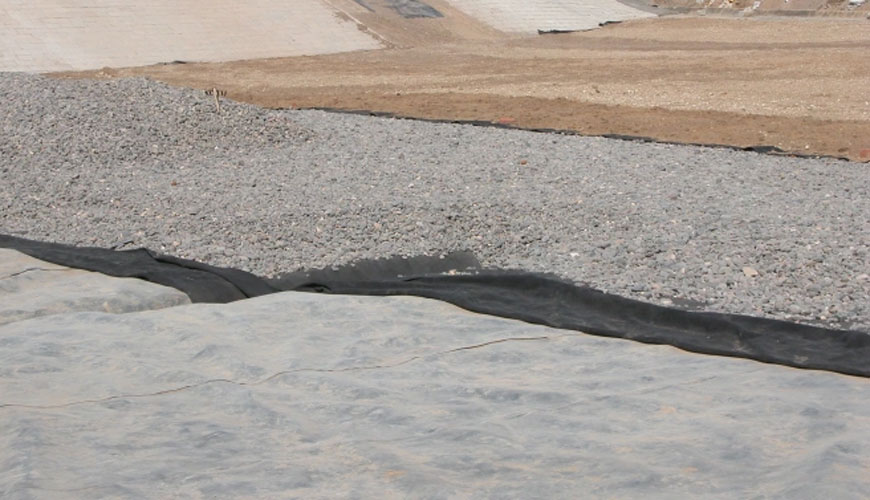

EUROLAB laboratory provides testing and compliance services within the scope of ASTM D4632 standard. The ASTM D4632 standard is an index test that provides a procedure for determining the breaking load (retaining strength) and elongation (grabbing elongation) of geotextiles using the grab method. This test method is not suitable for knitted fabrics and alternative test methods should be used.

While useful for quality control and acceptance testing for a particular fabric structure, the results can only be used in comparison between fabrics with very similar structures because each different fabric structure performs in this test in a unique and characteristic way. Grab test methods do not provide all the necessary information for all design applications and other test methods must be used.
Including procedures for measuring crushing load and elongation with both dry and wet holding method; however, testing is normally done in the dry condition unless otherwise specified in an agreement or specification.
The retention method is applicable when it is desired to determine the "effective strength" of the fabric used, ie the strength of the material at a given width, the additional strength contributed by the adjacent material. There is no simple relationship between grab tests and strip tests, as the amount of fabric aid is dependent on the construction of the fabric. Useful as a quality control or acceptance test.
The procedure in Test Method D4632/D4632M for determining the grabbing strength of geographic texts can be used for acceptance testing of commercial shipments, but caution is recommended as information on inter-laboratory sensitivity is lacking. Comparative tests are recommended.
In the event of disagreement arising from differences in reported test results when using the procedures in Test Method D4632/D4632M for acceptance testing of commercial shipments, the recipient and manufacturer should perform comparative tests between their laboratories to determine whether there is a statistical bias. Competent statistical assistance is recommended for investigating bias. As a minimum, the two parties should receive a batch of test samples that are as homogeneous as possible and come from as many materials of that type. An equal number of test samples should then be randomly assigned to each laboratory for testing. Average results from two laboratories should be compared using the appropriate Student's test and an acceptable level of probability chosen by both parties prior to testing. If a bias is found, the cause must be found and corrected, or the buyer and manufacturer should agree to interpret future test results in light of known bias.
Most geotextile fabrics can be tested with this test method. Depending on its construction, some modifications of the tightening techniques may be required for a particular fabric. Special adaptation may be required with strong fabrics or fabrics made of glass fibers to prevent them from slipping or being damaged in the grips as a result of the shackle being compressed into the cleats, such as cushioning or overriding the specimen inside the shackle.
This test method is applicable for testing dry or wet fabrics. It can be used with constant traverse rate (CRT) or constant extension rate (CRE) type tension machines. However, there may not be an overall correlation between the CRT machine and the CRE machine. As a result, these two voltage testers are not interchangeable. In the event of an argument, the CRE machine will prevail.
Values stated in SI units or inch-pound units should be considered separately as standard. The values specified in each system may not be exactly equivalent; therefore, each system will be used independently of the other system. Combining values from the two systems may result in non-compliance with the standard.
This standard is not meant to address all safety concerns, if any, associated with its use. It is the responsibility of the user of this standard to determine appropriate safety and health practices prior to use and to determine the applicability of regulatory restrictions.
Our organization, EUROLAB, provides standard test method services for grabbing crushing load and elongation of geotextiles, within the framework of national and international standards, with its trained and expert staff and advanced technological equipment, among numerous test, measurement, analysis and evaluation studies. Contact EUROLAB to get testing service under ASTM D4632 standard.
To get an appointment, to get more detailed information or to request an evaluation, you can ask us to fill in our form and reach you.